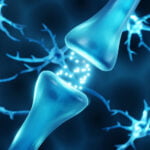
Neurotransmitter Crisis: Lifestyle Factors Contributing to Decreased Brain Chemicals
December 7, 2023
Mind-Boosting Menu: Foods That Smart People Swear By
December 7, 2023Beyond the physical movements and rhythmic steps, engaging in dance holds a plethora of cognitive advantages that invigorate and nourish the mind. Dance, whether freestyle or structured, ignites various regions of the brain. Studies have shown that as one moves to the beat, multiple cognitive processes come into play:
Enhanced Neuroplasticity: Learning new dance routines or steps challenges the brain, fostering neuroplasticity—the brain’s ability to reorganize and form new neural connections.
Improved Memory: Dance, with its intricate choreography, stimulates memory recall, enhancing both short-term and long-term memory functions.
Boosted Cognitive Flexibility: The fluidity and adaptability required in dancing promote cognitive flexibility, allowing individuals to switch between tasks more efficiently.
RHYTHM AND MOOD: ELEVATING MENTAL WELL-BEING
Beyond its cognitive effects, dancing offers a profound impact on emotional well-being and mental health:
Release of Endorphins: The physical activity of dancing triggers the release of endorphins—neurotransmitters associated with feelings of pleasure and reduced stress.
Stress Reduction: Engaging in dance acts as a stress-reliever, lowering cortisol levels and alleviating tension and anxiety
Enhanced Emotional Expression: Dancing offers a non-verbal outlet for emotional expression, allowing individuals to convey feelings through movement.
SOCIAL CONNECTION: THE DANCE OF SOCIAL COGNITION
Dance is often a communal activity, fostering social bonds and enhancing social cognition:
Improved Empathy: Partner or group dancing requires individuals to synchronize movements, fostering empathy and a deeper understanding of others’ actions and emotions.
Increased Social Confidence: Participating in dance classes or group sessions boosts social confidence, reducing feelings of isolation and enhancing social interactions.
AGELESS GRACE: DANCING FOR BRAIN HEALTH ACROSS GENERATIONS
Remarkably, the cognitive benefits of dancing are not confined by age:
Cognitive Reserve: Regular dance engagement contributes to cognitive reserve, potentially lowering the risk of age-related cognitive decline and neurodegenerative diseases like dementia.
Balance and Coordination: Dance involves complex movements that improve balance and coordination, essential for older adults in preventing falls and maintaining motor skills.
CONCLUSION
Dancing, an exquisite fusion of movement and expression, unveils a symphony of cognitive and emotional benefits for the brain. From bolstering memory and enhancing neuroplasticity to fostering emotional well-being and social connections, the rhythmic steps of dance offer a holistic workout for the mind.
Engaging in dance isn’t just an artistic pursuit; it’s a melody that harmonizes the intricate workings of the brain, nurturing both mental and emotional vitality across all stages of life. So, next time the music starts playing, consider stepping onto the dance floor—your brain will thank you for the enriching performance.


